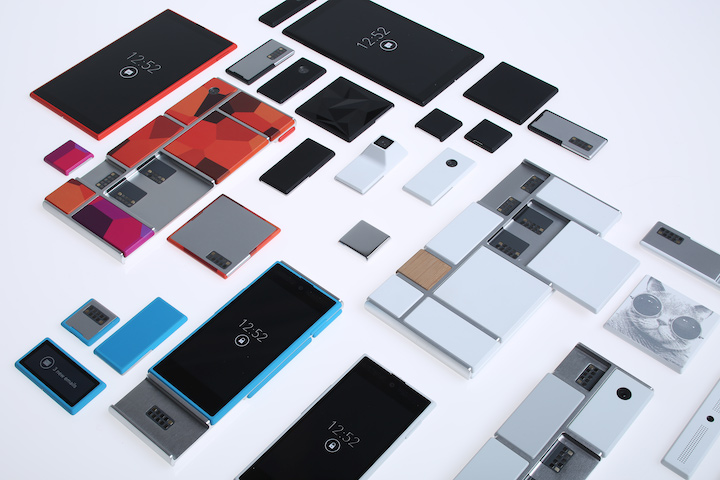At a recent developer event Google re-emphasized plans to show a fully-functional prototype of its modular Ara smartphone platform in late 2014 and revealed some additional details about the project. Apparently, Google’s plan is to keep everything simple and therefore the majority of modules of Ara handsets will be hot-swappable. While in general this is a good idea, it brings a number of questions regarding viability of the platform.
Smartphones based on the project Ara modular platform will be powered by Google Android L operating system, which provides exceptional flexibility in terms of hardware support. As a result of that and the hardware innovations, the modules, except the CPU and the display, will be hot swappable and can be changed without switching phone off, reports Phoneblocks.com.
Hot-swappable cameras, communication modules, storage devices and sensors make a lot of sense for the end-user. However, since no switch off is needed, it is obvious that the microprocessor module contains system-on-chip, memory and some other key components needed to make an OS run. As a result, the CPU module will be pretty expensive.
Typical mobile SoC cost around $30 (not including RAM) to device makers. Retail price of an Ara CPU module could get close to $80 or even $100, once device makers start to use stacked high-bandwidth memory that will likely be more expensive than LPDDR3.
Display modules of modern smartphones cost around $50 to device makers, which will likely translate to $100+ per module in retail.
All-in-all, key components of project Ara smartphones will cost rather high amounts of money, perhaps, around $200 or even more. Other components will unlikely be inexpensive as well simply because they will be bought in retail or from resellers, not from manufacturers in high volumes.
While prospects of project Ara are not too bright from the market perspectives, many companies, including Quanta, Toshiba, Rockchip, Foxconn, Laird Technologies and Array Labs, believe that the platform will take off.
Discuss on our Facebook page, HERE.
KitGuru Says: While the dream of upgradeable smartphones seems to be attractive, it should be noted that many things just cannot be modular and economically viable.
 KitGuru KitGuru.net – Tech News | Hardware News | Hardware Reviews | IOS | Mobile | Gaming | Graphics Cards
KitGuru KitGuru.net – Tech News | Hardware News | Hardware Reviews | IOS | Mobile | Gaming | Graphics Cards




$200 is a lot? The HTC One M8 was $650 when it came out..
$200 for a cpu and display and thats just the boom cost ….
I like it, it’s sort of forever phone. Not like iphone, oh you got an iPhone5s? you are so broke and old fashioned. throw it out, iPhone 6 is here.
You would be able to buy this phone with different displays with different resolutions LED LCD etc different processors with different amounts of cores and speeds and so on with every part of the phone so you don’t have to have all the top end stuff if it’s out of ur price range to begin with, you could simply buy a base model and build it up over time, one down side of this is though what ever top of the range module you buy won’t be top of the range for long so you would have to pick and choose wisely.
Initial cost would be expensive but future upgrades would probably pay it off as you wouldn’t need to buy a complete phone…
Come on google… I (and probably a lot of other people, certainly on this website) don’t really care about hot-swapping. I do care about modular phones, so I can customize to my own needs, just like my desktop computer… My graphics card or RAM memory isn’t hot-swappable either. The SCREEN is a very important part of this, especially since it is one of the most vulnerable parts of phones. I won’t mind turning my phone of every few months to get an upgrade or install a replacement part!!! The main reason for me to get a modular phone is so I won’t need to buy a new one every 1 or 2 years. With the screen not being modular, this advantage is reduced by at least 90%…
Reminds me of trigger in only fools and horses. “I won an award for keeping the same broom for 15 years, its only had 3 new heads and 5 new handles”.